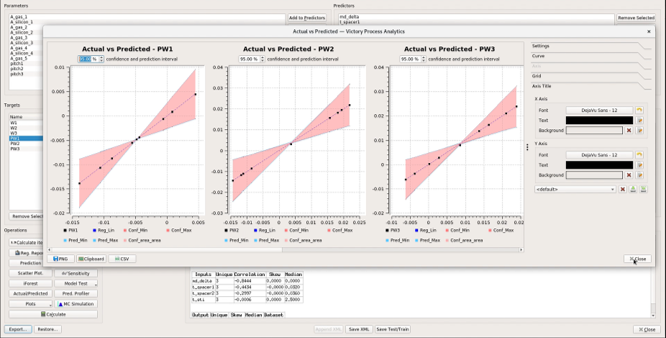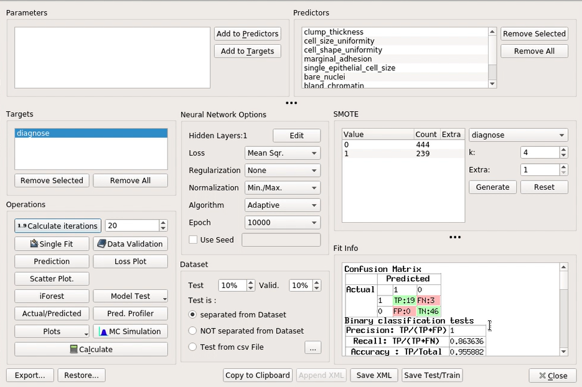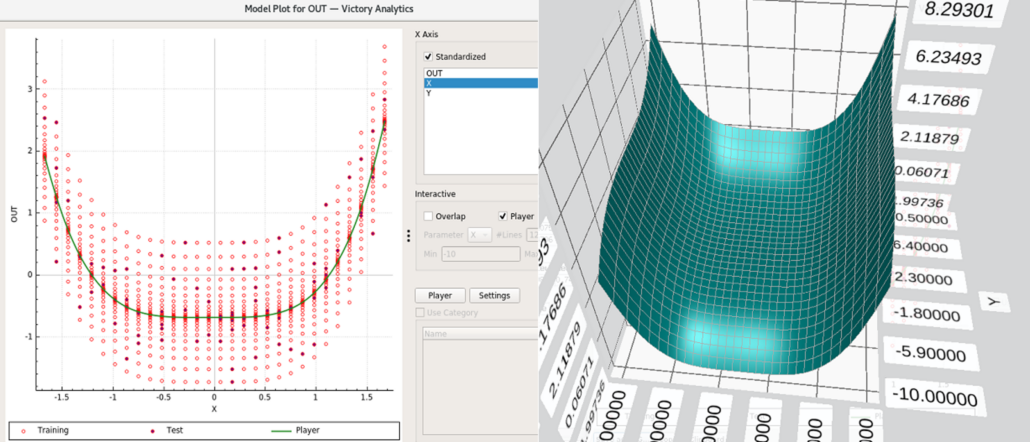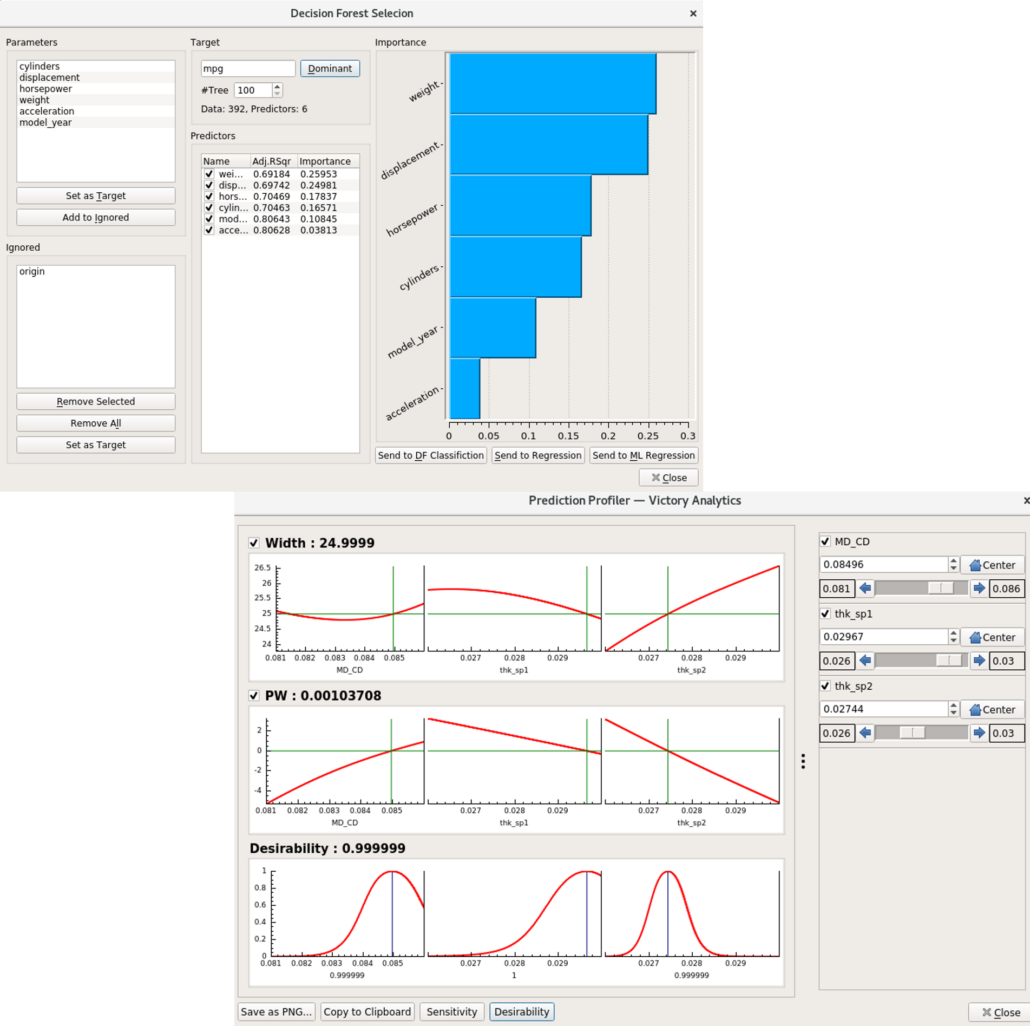Applications for Victory Analytics
- Manufacturing processes: Identify bottlenecks in manufacturing processes, improve quality control, and reduce costs
- Device / Circuit design and optimization: Engineers make better decisions by providing them with insights into their data. Increases the operation margin by the utilization of systematic data training
- Product Yield improvement: Quality control of process specification and / or target metrics and data-driven decision making
Key Features
- Multivariate data analysis using a combination of advanced statistics, neural networks, and decision trees algorithm
- Capabilities for managing input data, such as detecting outliers and missing data imputation
- Support multi-level classification analysis driven by the classical statistics and machine learning algorithm
- Advanced Design of Experiments algorithm such as computer-generated D-optimal DoE
- State of art data filtering and feature selection techniques based on the decision forest algorithm.
- Various sensitivity algorithms including Sobol, decision forest, etc.
- Victory Analytics can conduct time series analysis including AR/MA as well as seasonality analysis
- An integrated visualization tool that offers data insight
- Provide a python interface that enables complete end-user automation
Data Analysis and Modeling
Victory analytics involves collecting, cleaning, and analyzing data to identify trends, patterns, and relationships. It is an iterative process that involves a sequence of steps and requires general understanding of your input and output variables. it is recommended to set up the correct workflow:
- Dataset generation: Generate dataset for modeling including identifying categorical variables, duplicated inputs, etc. Transformation and subset of data if necessary
- Regression term selection: Selection of predictors and regression terms for modeling
- Model build: Build regular or M.L. regression model
- Model analysis: Model score, sensitivity, and data trend analysis
 Data Analysis and Modeling
Data Analysis and Modeling

Neural Network Modeling Window
Neural Network Analysis
Victory Analytics Neural Network is based on the supervised learning configuration and feed forward architecture. Having a non-linear activation function in neurons does makes a N.N. non-linear, which is the biggest advantage of NN regression over conventional polynomial regression method.
Next Generation Analysis with Gaussian Process Regression
Victory Analytics Gaussian Process Regression excels in fitting non-linear datasets. GPR simplifies balancing underfitting and overfitting considerations with easy-to-use parameter tuning. With Victory Analytics expect superior performance compared to Python and R Scripts.

Gaussian Process Regression

Optimization and Desirability
Optimization and Desirability
Victory Analysis provides various optimization algorithms. The choice of optimization options is attributed by various conditions such as non-linearity of the model, number of inputs and outputs. The optimization algorithms are:
- Local Optimization Algorithms
- Levenberg-Marquardt
- Hooke-Jeeves
- Global Optimization Algorithms
- Simulated Annealing
- Parallel Tempering
- Genetic Algorithm
- Differential Evolution
In conjunction with optimization algorithm, Victory Analytics provides Desirability analysis. It is a data analysis technique that quantifies the multiple output target into a single index. It is predicated on the assumption that there is an ideal set of values for the data and that any divergence from this ideal set of values is bad.



Victory TCAD 2025 Release
Accelerating Vertical GaN Power Technology Development with Physics-based Digital Twins for 800V DC AI Factory Power Infrastructure
Dynamic Testing for Power MOSFET
The Impedance Field and Small-Signal Noise